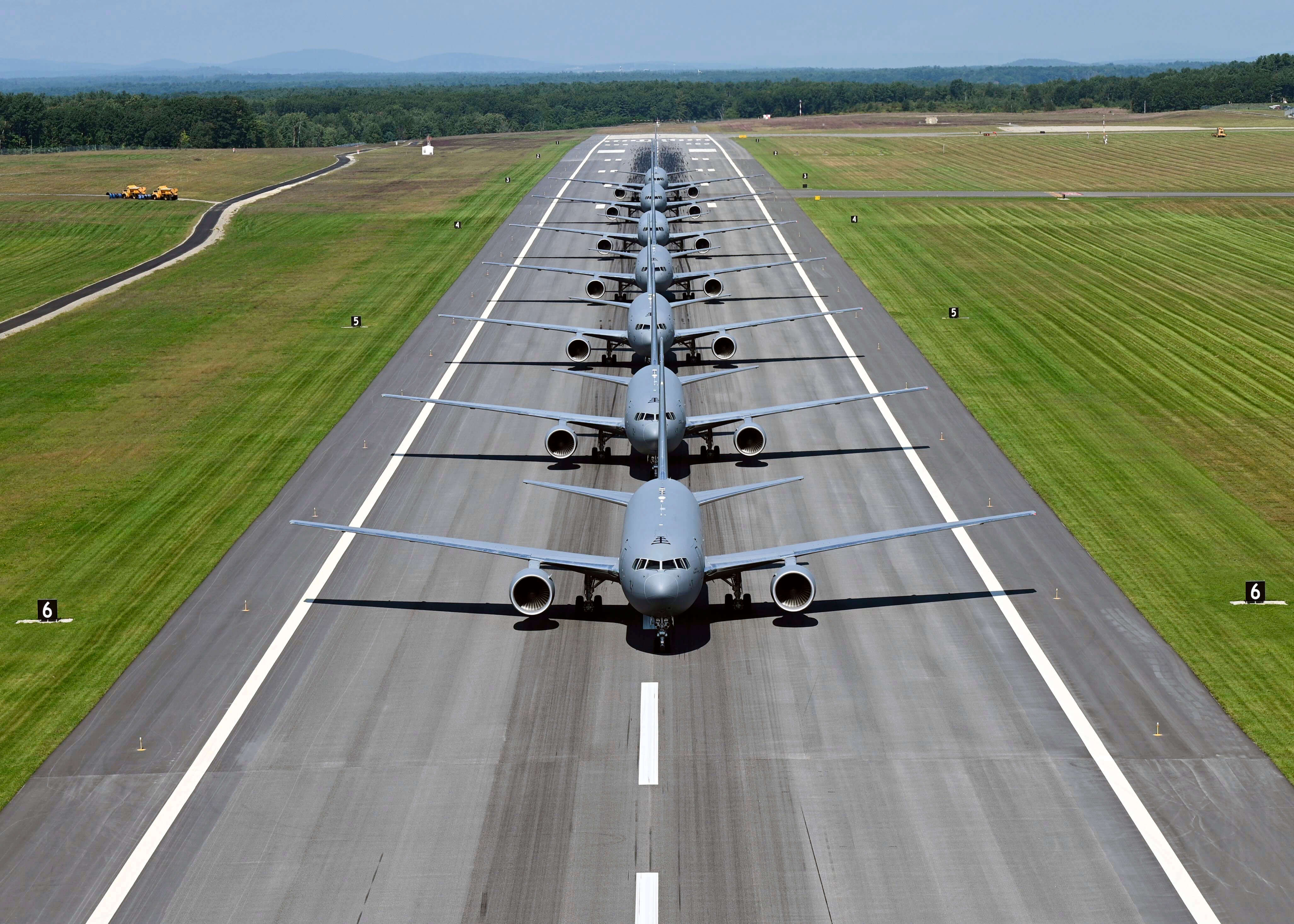The U.S. Air Force wants to review its tanker strategy decided in 2010. By 2035, the USAF wants to have tankers that can operate with the combat aircraft in service and that can refuel in high-intensity conflicts. As a result of this change in strategy, the Lockheed Martin and Airbus LMXT tanker project appears to be in serious jeopardy.
An expected shock to tankers
The arrival of the KC-46 tanker, as part of the KC-X program, has, among other things, allowed the U.S. Air Force to plan for the retirement of the KC-135 Stratotanker and KC-10 Extender tankers. The next tanker program for the USAF, called KC-Z, is already under development, but technological advances will take time to develop, and the aircraft, which is more than likely stealthy, is not expected to enter service before 2040. Thus, with a view to lightening the task of the KC-46, the KC-Y program was planned to hold a second type of tanker within the USAF. This "bridge tanker" (as it bridges the gap between the KC-X and the KC-Z) is expected in the early 2030s. The competition centered around two manufacturers:
- Boeing is again proposing its KC-46 Pegasus, in an improved version
- Lockheed Martin, in cooperation with Airbus, is proposing the LMXT, a tanker based on the Airbus A330 MRTT tanker
The competition was expected to be close as the KC-46 was given as the winner, but delays in commissioning and particularly in connection with the camera system for the boom (military in charge of refueling) had diminished interest in the Pegasus. Conversely, Lockheed Martin and Airbus proposed an aircraft already certified for refueling and on July 19, 2022, Airbus demonstrated the autonomous capability of its refueling system (article on the subject), a system that Airbus was also to manage for the LMXT (more information in this article).
Change of plans!
Andrew Hunter, the Assistant Secretary of the U.S. Air Force in Acquisition, gave more information on future USAF tankers at the AFA Warfare Symposium. The first piece of information is the abandonment of a strategy established in 2009-2010:
"We have come to the conclusion that the KC-X, -Y, -Z strategies that were established in the 2009-2010 timeframe are no longer adequate to...meet the joint force's air-to-air refueling requirements in the 2030s and beyond."Yet, it states that the Next Generation Air-refuelig System (NGAS) is intended to do just that, enabling the US Air Force's tankers to survive in a contested environment while providing refueling missions for aircraft in service in the mid-2030s and beyond. This includes the NGAD and its accompanying systems. This requires the aircraft to be able to accompany these stealthy systems, whether they are in a controlled area or near the front lines.
This thinking takes into account new threats: while the USAF's strategy in the Pacific relies mainly on tankers, the arrival of China's fifth-generation J-20 aircraft is changing the game: this aircraft is designed for long-range combat but also, and above all, to break into enemy airspace and wreak havoc against forward airborne lookout and command aircraft (AEW&C), electronic warfare aircraft... and tankers! The loss of tankers would mean a consequent loss of power projection for U.S. combat aircraft on operations.
The choice of additional KC-46s?
Andrew Hunter also announced that the USAF has requested a production estimate for Boeing and Lockheed Martin:
- No upgraded KC-46s until 2032, as a result of the need to produce all 179 KC-46s ordered, with the last one to be delivered in 2029. Also factor in the development of upgrades
- No LMXT before 2034
Or, as explained above, by those dates the USAF no longer wishes to buy conventional, highly vulnerable refueling aircraft. It then proposes to buy 75 additional Pegasus aircraft and then concentrate totally on NGAS. He says that in that case, the USAF will soon decide on the method of purchasing the KC-46s: Boeing or built by another company (probably under license), although the choice of Boeing seems, in his opinion, the most efficient.
However, he notes that in order to be chosen in the KC-X competition, the KC-46 had been offered at a very reduced price. However, several factors would result in much higher costs:
- the consideration that Boeing would be the only company in the race
- the KC-46 program has a $6 billion deadweight loss that Boeing will want to make up for
- the need to develop an improved KC-46


A bleak future
The choice is not yet made, but the future of LMXT looks pretty bleak. Adding to this is also the statement of US Air Force Secretary Frank Kendall before the House Armed Services Committee:
"I like the competition. I'm all for it. It's the best tool to cut costs. But yes, there has to be a demand for the other aircraft that are proposed[...]It's not as sure as it was a year ago, say, that we're going to have a competition [...]"
The Air Force secretary had also proposed that the upgraded KC-46s have drone control and airborne communications node capabilities. Hunter announced that both of these possibilities would only be developed in an effort to reduce costs.
No firm decision yet
There is no decision made yet, but it is clear and unmistakable that the KC-Y program is well and truly in jeopardy, and with it, LMXT, in favor of Pegasus.
Hunter also said the USAF will brief industry on their willingness to review their plans and see what they can offer in response. A brief is expected to be released in the middle of this year on this topic.


Découvrez cet article sur Air&Cosmos

